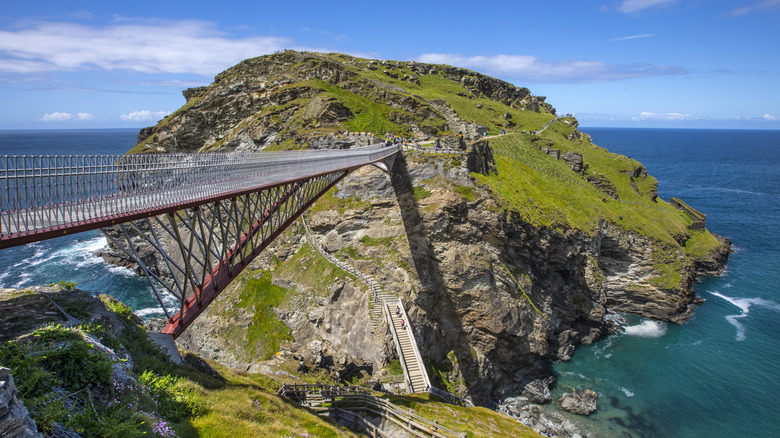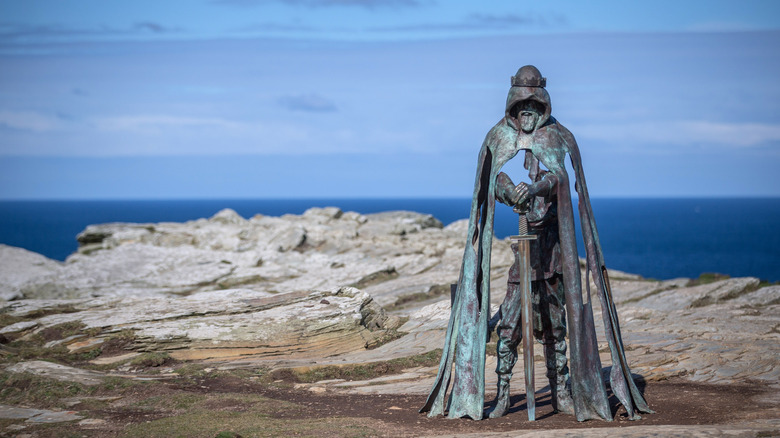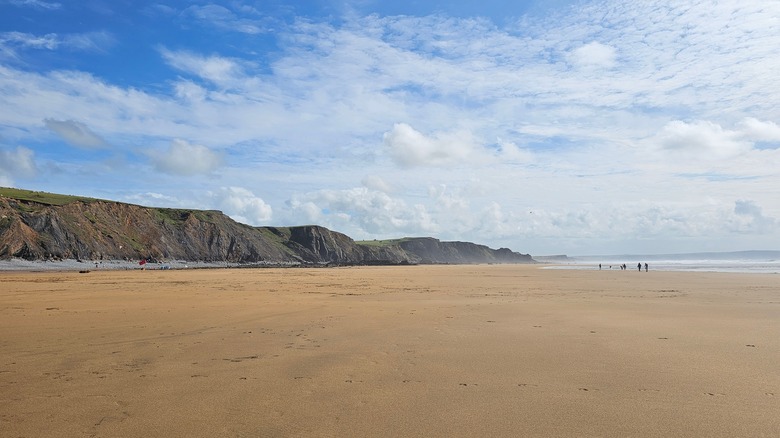Discover Magic And Mystery In This Little English Town With Historic Ruins And Cornish Pasties
Sometimes it feels like it can be hard to explore the British Isles without stumbling over a fabulous historic castle, ancient standing stone, or iconic location. There are fascinating tales and folklore everywhere you turn, from fearsome beasts in Bodmin to shape-shifting seal people along the Scottish coastline. But few places are as immersed in mystery, myth, and magic as Tintagel in Cornwall.
This stunning town in a remote corner of northern Cornwall's rugged Atlantic coast is an extraordinary spot. It is situated at the end of a narrow, winding country road, and the village itself is quaint and delightful. But it is easy to see, as soon as you arrive, that this isn't an ordinary place. Rather than farm shops and newsagents, the streets are lined with stores selling crystal balls, tarot cards, swords, and dragon sculptures.
At the end of the village lies its true spectacle – Tintagel Castle. Perched on an outcrop, broken off almost entirely from the mainland, the craggy, dark ruins cling to the cliffs while wild waves crash onto the rocks below. It is easy to see why this is considered the home of ancient kings and why legends have found a way of attaching themselves to this magnificent site.
Kings, wizards, and heroic quests
First mentioned in Geoffrey of Monmouth's medieval chronicle in the 12th century as the birthplace of King Arthur, Tintagel has been inextricably linked to the legends of the Knights of the Round Table, of Galahad, Lancelot, and Guinevere for centuries.
Exploring the castle is the main highlight of any visit to Tintagel and it is worth taking your time over. A visit begins long before you get to the castle itself, with a short trail from the village to the award-winning suspension bridge that is thrown across the gap. Crossing the bridge brings you to the ruins of the 13th-century castle, the seat of Richard, Earl of Cornwall. History and legend combine as you follow the narrow paths up the side of the cliffs and around the island, imagining yourself walking in the footsteps of mythological figures.
For the strictest of history buffs, the links between Tintagel and Arthur are tenuous at best. Indeed, the evidence for Arthur as a historical figure is sparse. But Tintagel has certainly been an important fortification for centuries, and as you stand next to the Gallos sculpture and gaze out over the Atlantic Ocean, you can feel the place's aura of mystical energy.
Pasties, witches, and world-class beaches
Tintagel isn't just a wonderful spot for fans of mythic British kings and magic swords. It is also slap-bang in the middle of one of the best parts of Cornwall, so it is worth exploring this underrated coastal destination more after taking in the ruins. Fuel yourself in the village with a pasty from The Cornish Bakery and a Treleavens ice cream from She Sells Tintagel before heading back up the road towards Boscastle. There you'll find one of the most bizarre and brilliant museums in the world, the Museum of Witchcraft and Magic. This must-see place claims to hold one of the world's largest collections of artifacts relating to folk magic, ceremonial magic, Freemasonry, and Wicca. It was founded in the 1950s by a practicing English magician and plays an active role in the contemporary British occult community.
Leaving the supernatural behind, Cornwall has a spot on the list of the best beach vacations in Europe. Try to arrange your trip to coincide with the best time to visit England for the weather. Bossiney Cove, between Tintagel and Boscastle, is a sheltered nook framed by tall cliffs, perfect for a quiet afternoon. Further north, Saint Gennys Beach is expansive and windswept, while Bude is renowned for its golden sand and excellent surf breaks. And north beyond that is Woolecombe Beach, another top-ranked beach on the U.K. coastline.


